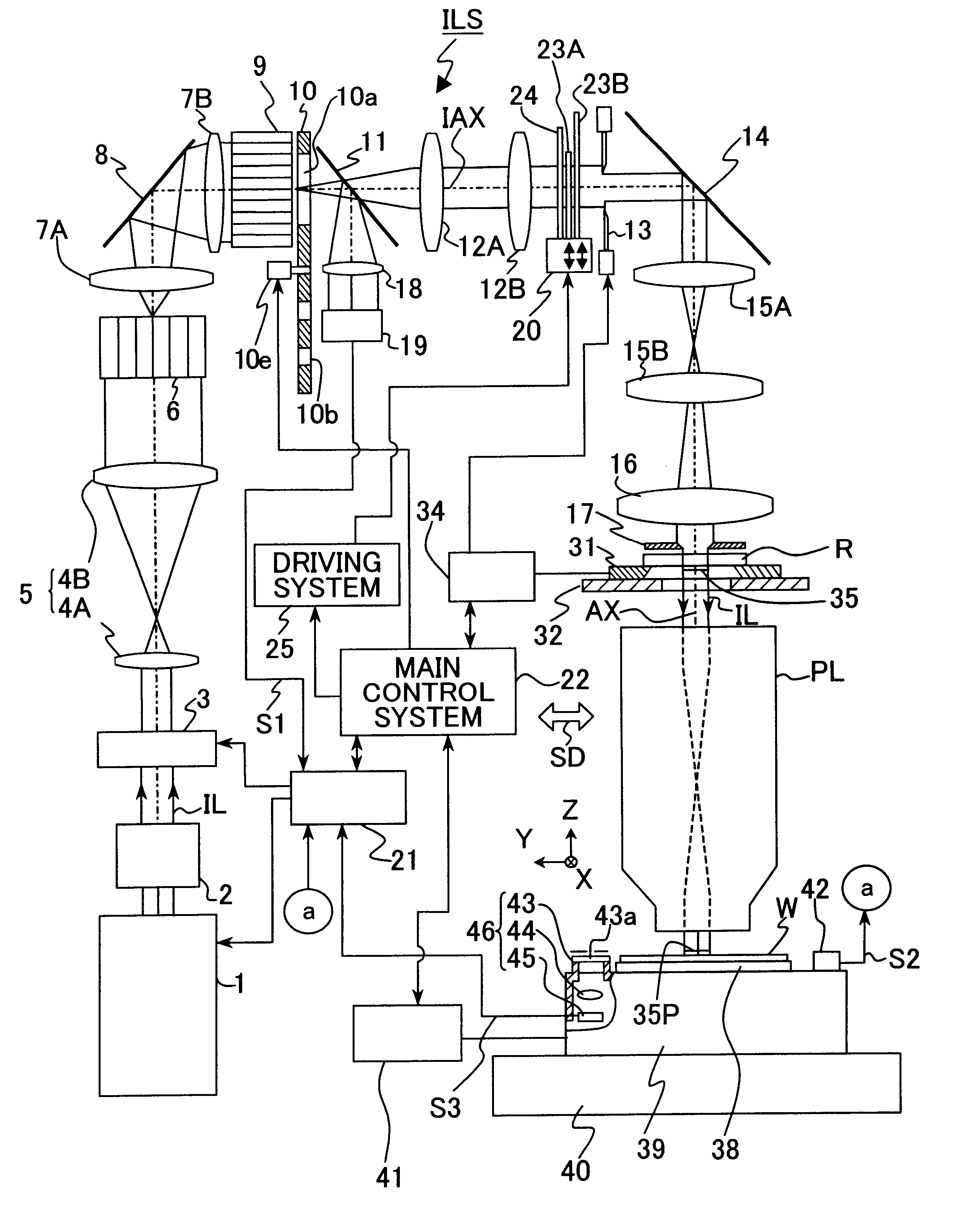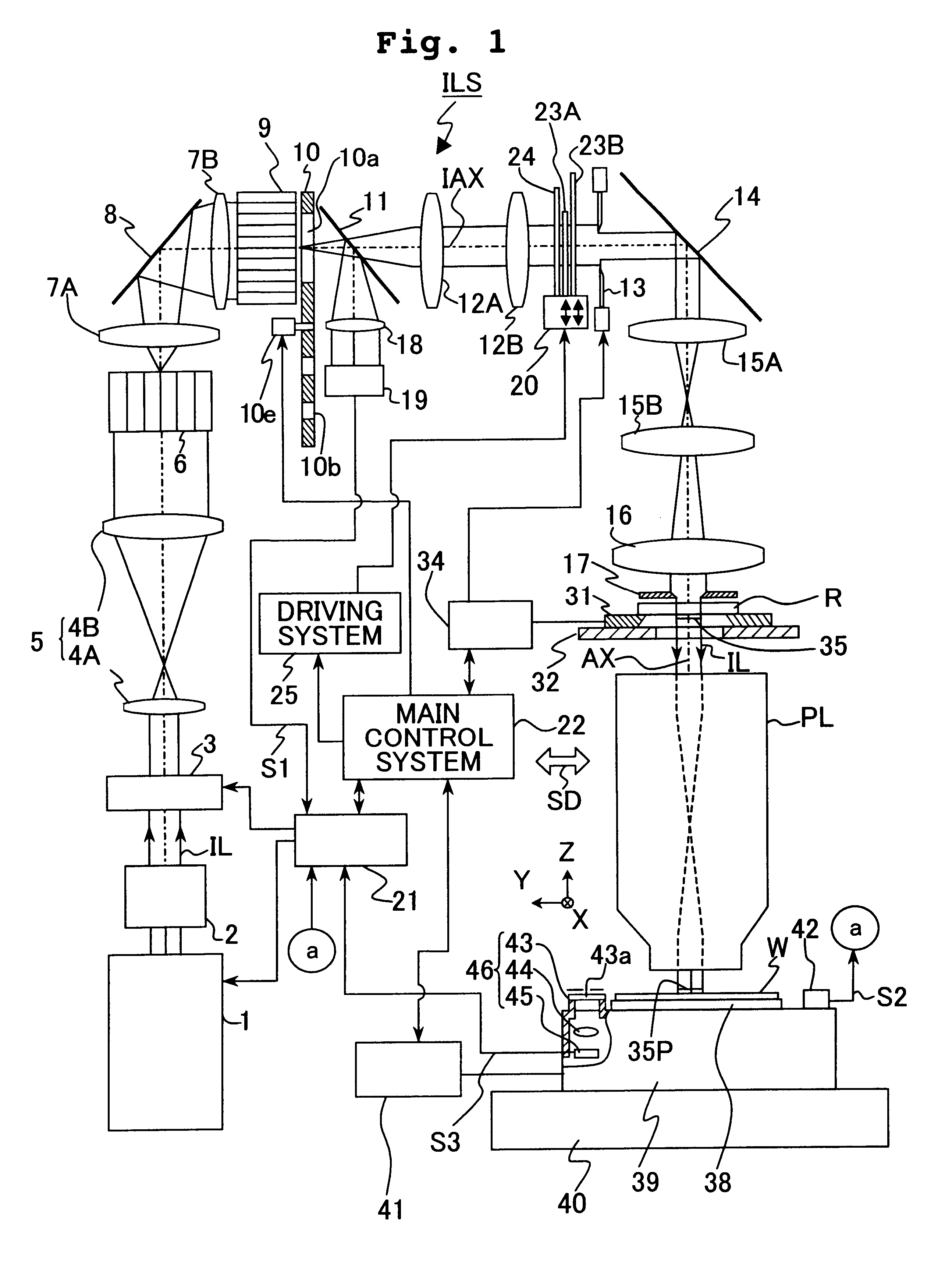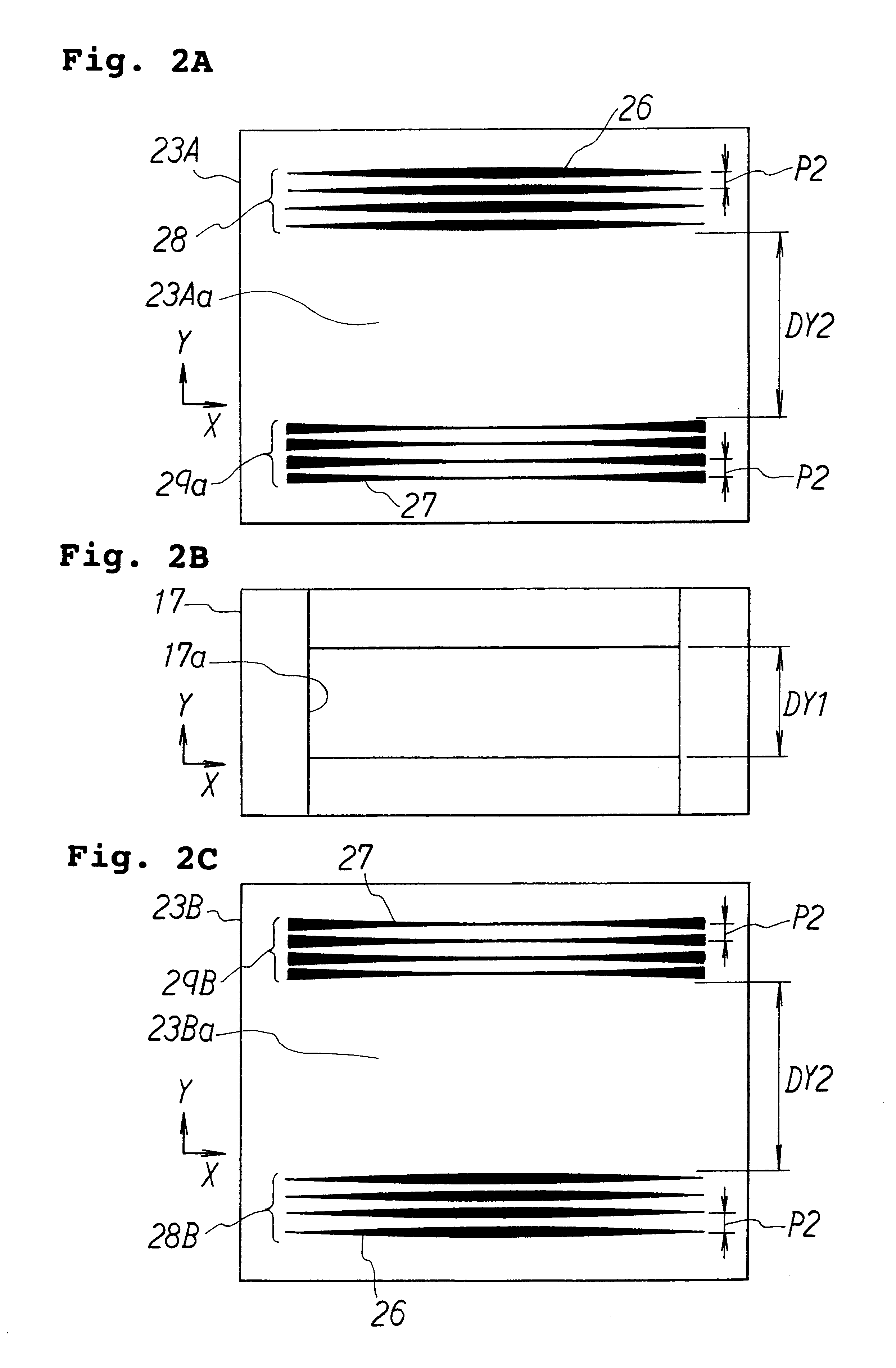Exposure method and exposure apparatus
a technology of exposure apparatus and exposure method, which is applied in the direction of photomechanical apparatus, instruments, printing, etc., can solve the problems of inapplicability of mechanical switching the shape of the opening inability to meet the integral number of pulses, and inability to apply mechanical switching the shape of the field diaphragm
- Summary
- Abstract
- Description
- Claims
- Application Information
AI Technical Summary
Benefits of technology
Problems solved by technology
Method used
Image
Examples
first modified embodiment
FIG. 10 shows uneven illuminance-correcting plates 23C, 23D of a first modified embodiment as illustrated corresponding to the uneven illuminance-correcting plates 23A, 23B shown in FIG. 8A. With reference to FIG. 10, two pairs of convex uneven illuminance-correcting shielding line groups 28A and two pairs of concave uneven illuminance-correcting shielding line groups 29A are formed in parallel on the first uneven illuminance-correcting plate 23C. Two pairs of shielding line groups 28B and two pairs of shielding line groups 29B are formed in parallel on the second uneven illuminance-correcting plate 23D. That is, the shielding line groups are formed on each of the uneven illuminance-correcting plates 23C, 23D in an area which is twice as large as that of each of the uneven illuminance-correcting plates 23A, 23B shown in FIG. 8. In this arrangement, the entire area of the image of the opening 17a of the fixed blind 17 (illumination area 35) can be covered with the shielding line grou...
second modified embodiment
FIG. 11A shows an uneven illuminance-correcting plate of a With reference to FIG. 11A, shielding lines 64A, 64B for correcting the concave uneven illuminance, in which the line width is gradually changed in the non-scanning direction (X direction), are depicted on unillustrated two transmissive substrates. The shielding lines 64A, 64B (unillustrated substrates) are constructed so that they may be continuously driven independently in the X direction with respect to the illumination area 35 on the reticle. In this modified embodiment, in order to correct the concave uneven illuminance in the non-scanning direction, the shielding lines 64A, 64B are gradually moved inwardly in the X direction as shown in FIGS. 11B and 11C depending on the increase in degree of the uneven illuminance. When the two shielding lines 64A, 64B are arranged centrally asymmetrically with respect to the illumination area 35 as described above, the telecentric discrepancy can be also corrected continuously toget...
third modified embodiment
FIG. 12 shows a shielding line of a FIG. 12A illustrates the shielding line 26 used in the embodiment shown in FIG. 8. FIG. 12B illustrates a shielding pattern 66 in which identical dot patterns composed of a large number of minute shielding films are depicted with a density distribution to make change, for example, substantially in a form of quadratic function with respect to the non-scanning direction so as to possess substantially the same shielding characteristic as that of the shielding line 26. The shielding pattern 66 can be used in place of the shielding line 26. Accordingly, it is possible to further reduce the uneven illuminance during the static exposure.
As for the shielding pattern 66, the spacing distances between the respective adjoining dot patterns are set as randomly as possible so that no uneven illuminance is caused by the occurrence of any speckle pattern in the illumination area on the reticle. In place of the control of the density distribution of the large nu...
PUM
| Property | Measurement | Unit |
|---|---|---|
| wavelength | aaaaa | aaaaa |
| wavelength | aaaaa | aaaaa |
| wavelength | aaaaa | aaaaa |
Abstract
Description
Claims
Application Information
 Login to View More
Login to View More - R&D
- Intellectual Property
- Life Sciences
- Materials
- Tech Scout
- Unparalleled Data Quality
- Higher Quality Content
- 60% Fewer Hallucinations
Browse by: Latest US Patents, China's latest patents, Technical Efficacy Thesaurus, Application Domain, Technology Topic, Popular Technical Reports.
© 2025 PatSnap. All rights reserved.Legal|Privacy policy|Modern Slavery Act Transparency Statement|Sitemap|About US| Contact US: help@patsnap.com



